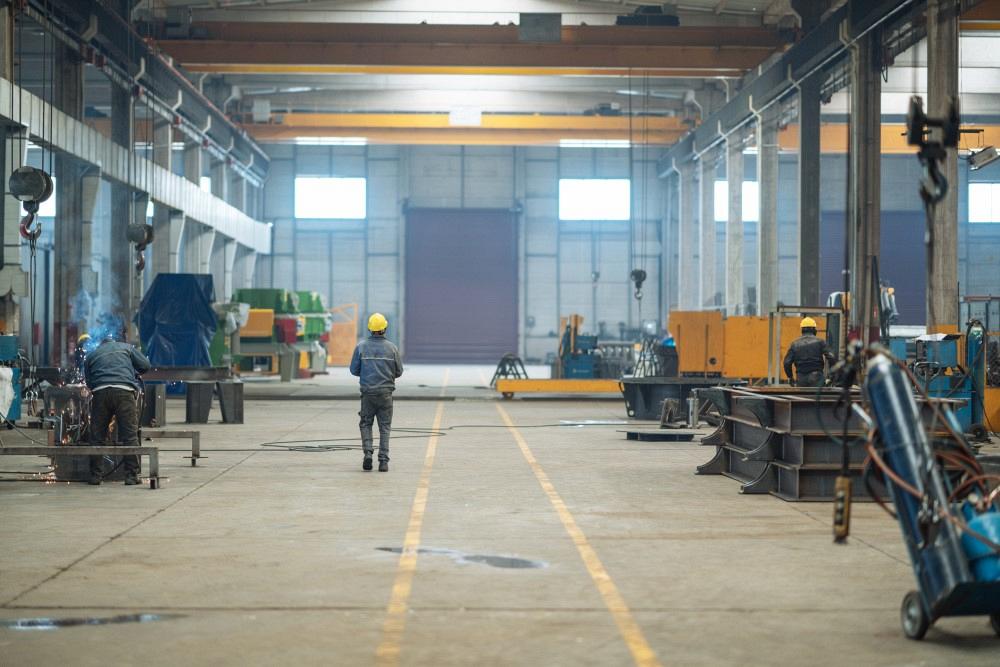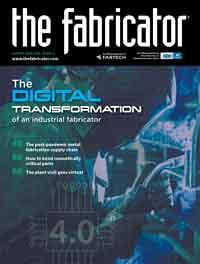Senior Editor
- FMA
- The Fabricator
- FABTECH
- Canadian Metalworking
Categories
- Additive Manufacturing
- Aluminum Welding
- Arc Welding
- Assembly and Joining
- Automation and Robotics
- Bending and Forming
- Consumables
- Cutting and Weld Prep
- Electric Vehicles
- En Español
- Finishing
- Hydroforming
- Laser Cutting
- Laser Welding
- Machining
- Manufacturing Software
- Materials Handling
- Metals/Materials
- Oxyfuel Cutting
- Plasma Cutting
- Power Tools
- Punching and Other Holemaking
- Roll Forming
- Safety
- Sawing
- Shearing
- Shop Management
- Testing and Measuring
- Tube and Pipe Fabrication
- Tube and Pipe Production
- Waterjet Cutting
Industry Directory
Webcasts
Podcasts
FAB 40
Advertise
Subscribe
Account Login
Search
The hidden causes behind the skilled labor crisis
Metal fabrication industry's labor shortage more about the nature of certain jobs
- By Tim Heston
- August 10, 2020
- Article
- Shop Management

The metal fabrication industry’s labor shortage might be less about technical skill and more about the nature of certain jobs in the shop. Getty Images
Imagine it’s January 2020. You’ve worked in a fabricator’s grinding department for a few years and, well, it’s a job. The shop seems busy and successful, and you get along with your co-workers. It’s not a bad place to make a living.
Then the pandemic hits, work volume plummets, and you’re laid off. You panic for a few weeks, simply because the state unemployment office is having a hard time processing all the new claims. But once the check arrives, you’re pleasantly surprised. Thanks to the recent government aid package, you’re getting about $600 more a week in unemployment aid. With all that money, why return to work?
“There has certainly been some of this behavior, but it is not as common as many assume.” So wrote Chris Kuehl, economic analyst for the Fabricators & Manufacturers Association, in his mid-July Fabrinomics e-newsletter. Why isn’t the behavior common? “[One reason is that] the layoffs hit the service sector hardest, and these are the businesses that have struggled to reopen.” They’re simply not in a financial position to rehire the workers they laid off.
“The second factor is a longer-term consideration. Most turning down jobs are classified as ‘transactional’ workers, and this is about 15% of the total workforce. These are people who are not motivated by the future opportunities at their place of employment. They do not expect raises or promotions or benefits. They are not there to build skills or gain experience. It is just a job, a paycheck at the end of the day.”
Recessions and the layoffs they cause sometimes act as an uncomfortable reality check. In good times, a company might staff up to tackle new opportunities. Maybe it’s an expanded business development and sales division or a team to manage a new product line or a novel approach to automation—all good signs that the organization is reinvesting profits for a brighter future.
Of course, some initiatives just don’t pan out, and the financial stresses force company leaders to pull the plug and move in a new direction. In the worst-case scenario, talented people end up getting furloughed or let go entirely. It’s a tough situation in the short term, but eventually such talent moves on to other opportunities.
Another kind of layoff might be less of a shock in the short term, but it also might reveal a hidden root cause behind the industry’s decades-old skilled labor crisis. It involves those transactional employees, usually at the bottom rung of a shop’s functional hierarchy. They help sort parts in the cutting department, retrieve and stage tools in bending, perhaps fetch the right fixtures and jigs in welding and assembly. They might climb a rung or two, perhaps learn to wield a right-angle grinder with finesse, even do some basic welding.
They don’t have the best attendance record, but when they do show up, they get the job done. Thing is, they’re disengaged. When the recession comes and they lose their job, they’re happy to use that healthy unemployment check as leverage to find a better gig elsewhere. It’s all temporary, just a gig. They show up (usually) and do their jobs, but they really don’t care.
“These people have always been the hardest to retain,” Kuehl wrote, “as they will leave one employer for another if they can make an extra 25 cents a week.”
The job’s transactional and just a means to an end. But why do they see absolutely no value in the job beyond a paycheck? Sure, some of it might have to do with the paycheck’s small size, but it’s probably not the whole story.
Consider the nature of the functional hierarchy and the job descriptions within them; they’re usually narrower at the bottom, broader at the top. A helper can stage tools but can’t really run a press brake; a brake operator can stage tools for others when needed and set up and run a machine for most orders; a brake lead can do it all, even the most challenging forming jobs. It’s easy to guess who would get the ax during tough times. It’s the helper, the transactional employee.
But does that entry-level employee really need to be transactional? Recently I’ve spoken with more shops that have renewed their focus on cross training, even for entry-level employees. They have a “home department” where they perfect certain skills, but they also move around and help where they can. The more they know, the more they focus on the broader process.
Each cross-trained employee helps produce more revenue. Such an operation might be in a better financial situation to weather even the harshest recession—but not always, as the COVID-19 recession has made painfully clear. Even so, these engaged, curious people eventually find other opportunities. And it’s not “just a job.” It’s another step on a lifelong career path.
Earlier this year I spoke with PJ Swett, vice president of operations at Prototek, a custom metal fabricator with plants in New Hampshire, Wisconsin, and California. He started life at Prototek a dozen years ago as a shipping clerk. He said that he rose through the ranks quickly largely because of the company’s culture, including its focus on cross training.
Skills development is absolutely critical, but the industry needs more. The more I talk with stakeholders in fabrication, the more I’ve come to believe that this business really doesn’t have a skilled labor problem. It has a transactional labor problem.
When people talk about overcoming the labor problem, they usually discuss changing a shop’s culture—but how do they do it? One strategy could be to take a look at the org chart, expand cross training, and change the nature of those jobs transactional employees tend to take.
About the Author

Tim Heston
2135 Point Blvd
Elgin, IL 60123
815-381-1314
Tim Heston, The Fabricator's senior editor, has covered the metal fabrication industry since 1998, starting his career at the American Welding Society's Welding Journal. Since then he has covered the full range of metal fabrication processes, from stamping, bending, and cutting to grinding and polishing. He joined The Fabricator's staff in October 2007.
subscribe now

The Fabricator is North America's leading magazine for the metal forming and fabricating industry. The magazine delivers the news, technical articles, and case histories that enable fabricators to do their jobs more efficiently. The Fabricator has served the industry since 1970.
start your free subscription- Stay connected from anywhere

Easily access valuable industry resources now with full access to the digital edition of The Fabricator.

Easily access valuable industry resources now with full access to the digital edition of The Welder.

Easily access valuable industry resources now with full access to the digital edition of The Tube and Pipe Journal.
- Podcasting
- Podcast:
- The Fabricator Podcast
- Published:
- 04/16/2024
- Running Time:
- 63:29
In this episode of The Fabricator Podcast, Caleb Chamberlain, co-founder and CEO of OSH Cut, discusses his company’s...
- Trending Articles
AI, machine learning, and the future of metal fabrication

Employee ownership: The best way to ensure engagement

Steel industry reacts to Nucor’s new weekly published HRC price

Dynamic Metal blossoms with each passing year

Metal fabrication management: A guide for new supervisors

- Industry Events
16th Annual Safety Conference
- April 30 - May 1, 2024
- Elgin,
Pipe and Tube Conference
- May 21 - 22, 2024
- Omaha, NE
World-Class Roll Forming Workshop
- June 5 - 6, 2024
- Louisville, KY
Advanced Laser Application Workshop
- June 25 - 27, 2024
- Novi, MI


























